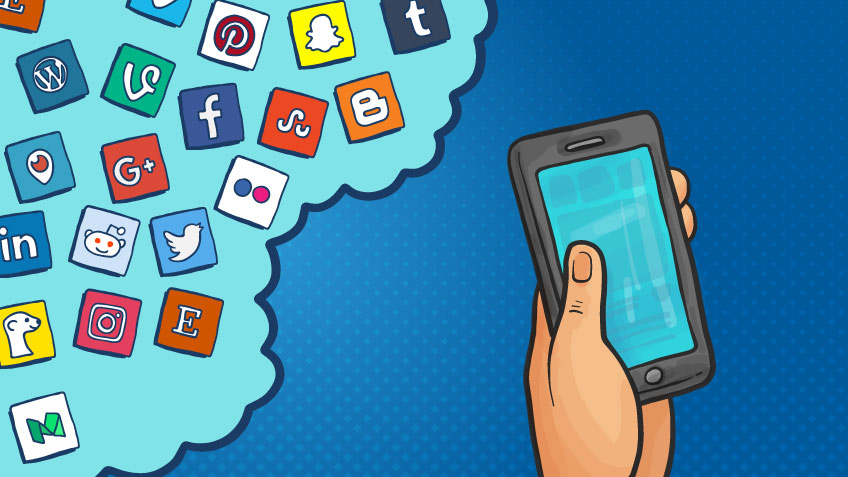What is Social Media?
Social media is a collective term for internet applications (platforms) where users share information with each other in a user-friendly and often fun way. Usually without the intervention of a professional editor.
This not only concerns textual information but also sound (podcasts and music) and visual material (images, photos, and videos) are shared via Social Media.
The core of Social Media is sharing, sharing, sharing … and only then received. This media allows you to socialize with other users.
Examples of Social Media Platforms:
The best-known examples of large international Social Media platforms (websites) are Twitter, LinkedIn, Facebook, YouTube, Wikipedia, Google, Myspace, Flickr, Xing, Foursquare and for example Slideshare. They are all fairly young companies of which Google is the oldest of its 20 years, Twitter, for example, was only established in 2006.
How Social Media “Work”?
With Social Media, the website visitor plays a central role. The visitor provides an important part of the content of a website. At YouTube these are movies, at Flickr, they are photos, at LinkedIn, they are profiles, discussions, jobs, etc. and on Twitter the so-called ‘Tweets.’
So much for the media. The social aspect of social media is mainly in the interactive features that Social Media has. The essence of Social Media is that you share information about yourself, about others or about a certain topic. Social Media Platforms bring together groups of people who are looking for the information that is shared by their ‘peers.’
As we get to know other people better, trust also increases, both in the ‘real world’ and in the virtual. And that means that we attribute greater value to the opinion of someone from our network than to that of a total stranger or an organization (advertising). The age-old principle of word-of-mouth advertising takes place on the production line on Social Media platforms. And that does not always have to be positive advertising …
Social Animal:
Man is a ‘social animal’ which means that people cannot do without other people. We need each other, it’s in our genes. That explains that Social Media sites are so popular. We look for other people who are related to us in a certain way, the same hobby, looking for a date or a new job, etc.
The typical thing about Social Media is that a snowball effect can occur. As a matter of fact, more and more people find their way to these sites (such as Facebook, Twitter, LinkedIn) because they see that people they know are there and that makes them curious. This is the viral (“viral”) effect of Social Media. This makes it possible that a huge population of users can be reached in a short time.
Social Media, Marketing & Communication:
The current technology that Social Media websites use makes it possible for companies and individuals to communicate cheaply and effectively with each other and with large groups of people. It is becoming increasingly important for organizations to deal well with this because it does not only offer opportunities. There are also risks.
The use of Social Media is playing an increasingly important role, and these activities are closely intertwined with the Marketing and Communication (PR) departments of companies and organizations. If you handle Social Media well, it is better to retain the trust of (potential) customers or to win for you.
I Love The Planet find the way to cheap social media marketing, and they write complete guide on social media marketing, click this link to access this guide: https://ilovetheplanet.ngo/articles/patreon-to-get-social-media-marketing/


